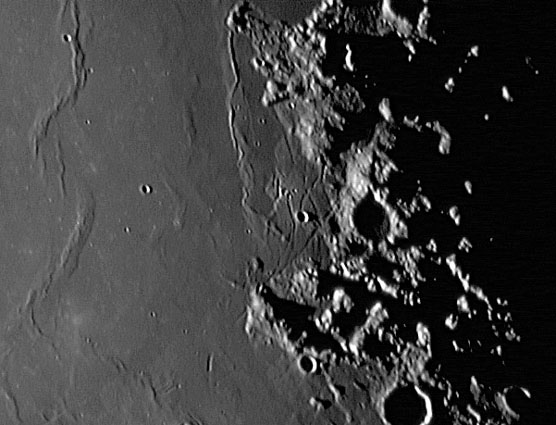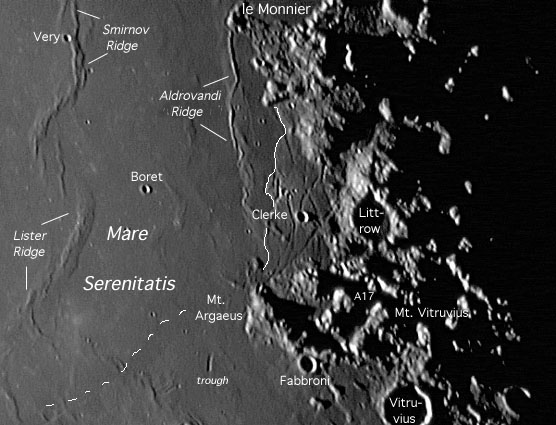September 22, 2015
Littrow Rilles - A Wider View
Originally published September 21, 2004
Image Credit: Geert Vandenbulcke |
|
Littrow Rilles - A Wider View It is amazing how many interesting areas of the Moon are nearly completely overlooked until someone captures a great image that says, "Hey, there is something interesting here!" This is that image for some older rilles tucked away in an embayment along the eastern shore of Mare Serenitatis. This area is most famous for the Apollo 17 site (A17 on mouseover), here shadowed by the towering massifs that made the landing dangerous. But just north of there, and west of the 31 km wide crater Littow are the Littow Rilles. These are an interrupted continuation of the same rilles that pass north of Plinius, northeast of Menelaus, and northwest of Sulpicius Gallus. All of these rilles formed in the older Serenitatis lavas that form the dark annulus (dashed line on mouseover) surroundng this mare. More rilles of this family continue across the highland between le Monnier and Posidonius. All of these rilles formed about 3.0 billion years ago when younger lavas flooded the central region of Serenitatis. This extra weight caused the basin to subside, forming fractures - the rilles - around its margins. Apollo orbital images reveal many small volcanic features in the dark annulus, including the large and elongated collapse depression (trough). The Apollo 17 landing site and the area cut by the Littrow Rilles are dark when seen at full Moon. This dark mantling material is iron and titaium rich, and may some day be a commercial source for these elements and oxygen. Observe it now before it is strip mined! Technical Details: Related Links: Yesterday's LPOD: Young Fractures? Tomorrow's LPOD: A Perfect Collection of Lunar Books |
|
Author & Editor: |
COMMENTS?
Register, Log in, and join in the comments.





